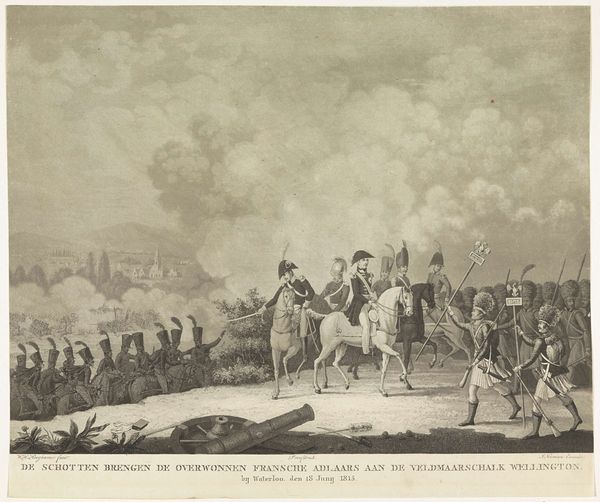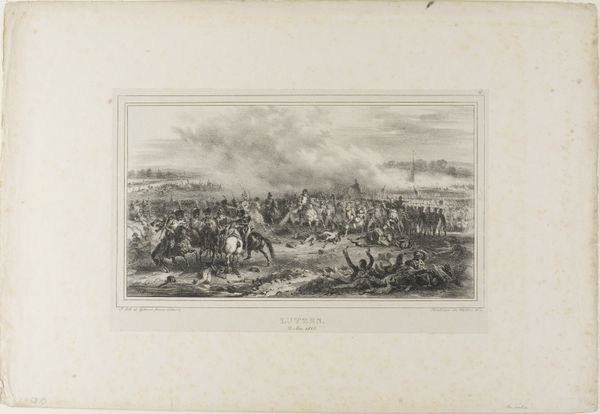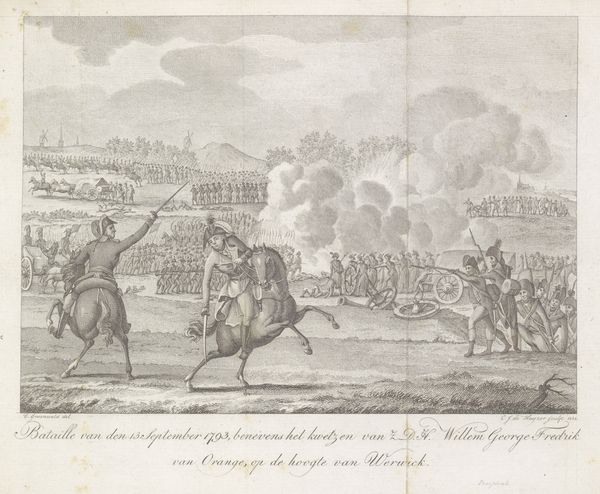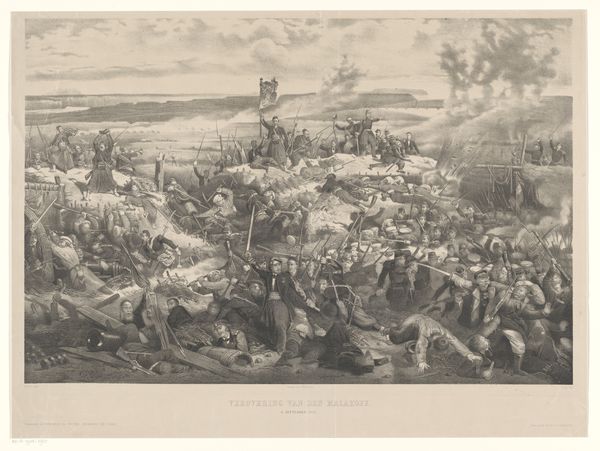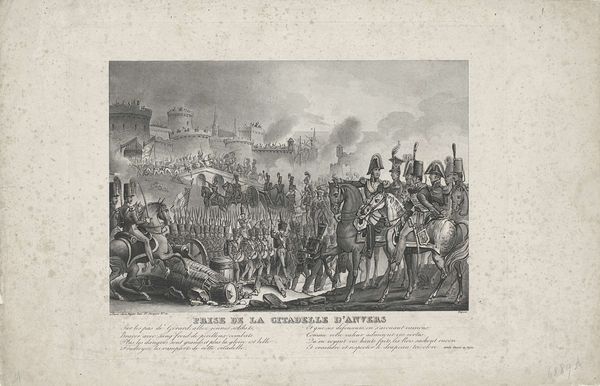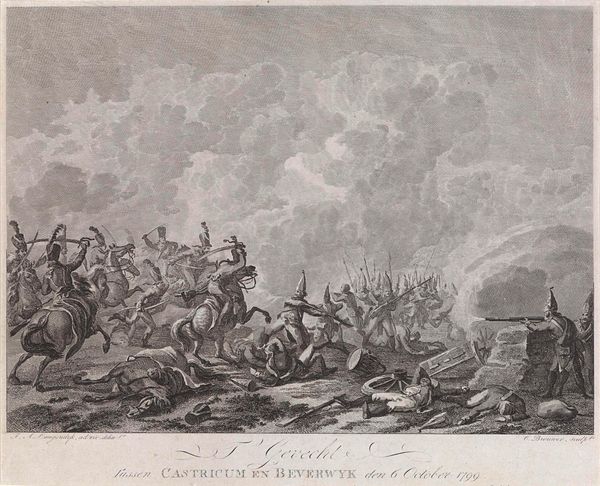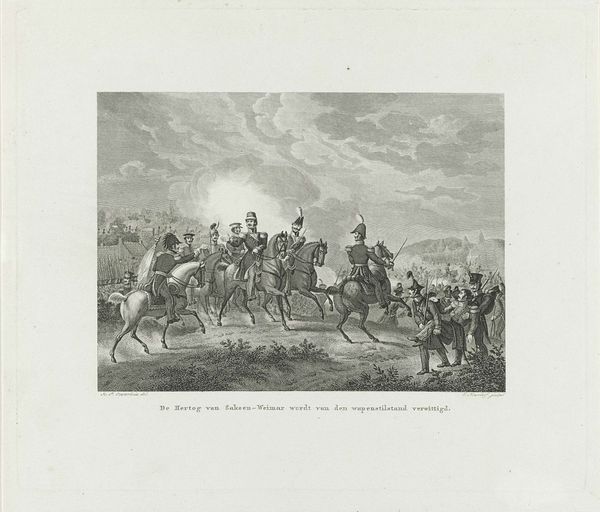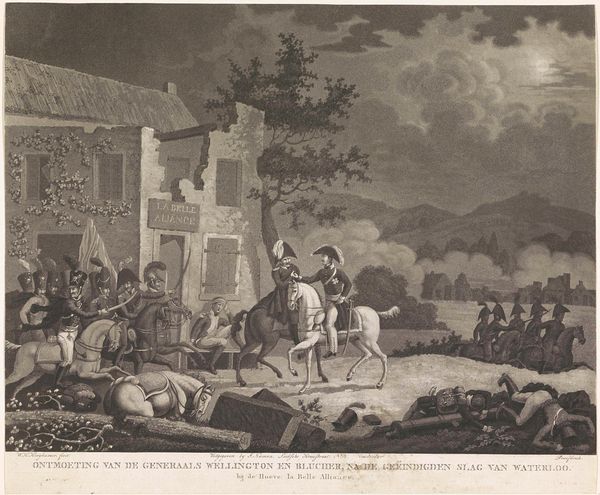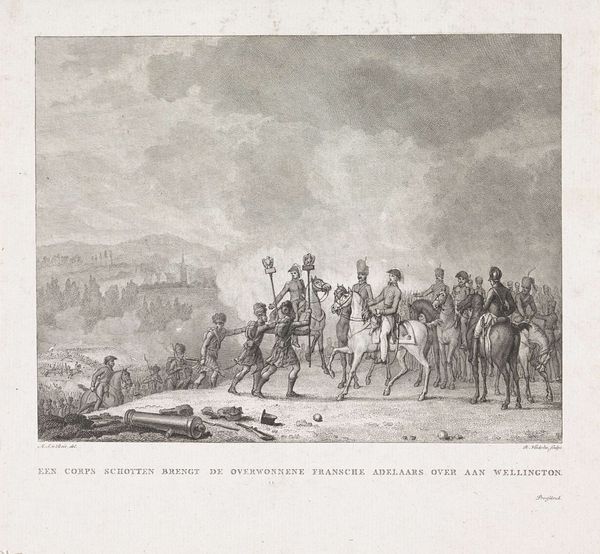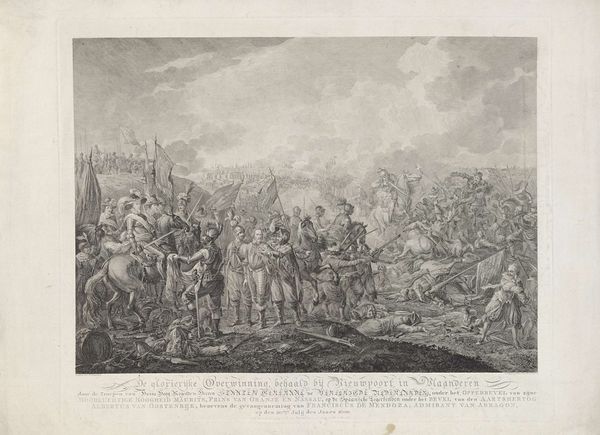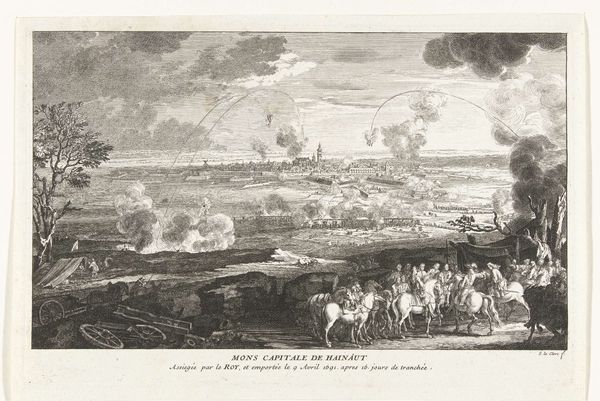
Prins van Oranje leidt de Nederlandse troepen bij Quatre-Bras, 1815 1815
0:00
0:00
print, engraving
# print
#
landscape
#
caricature
#
group-portraits
#
romanticism
#
history-painting
#
engraving
Dimensions: height 366 mm, width 454 mm
Copyright: Rijks Museum: Open Domain
Editor: This engraving by Friedrich Christoph Dietrich, made in 1815, is titled "Prins van Oranje leidt de Nederlandse troepen bij Quatre-Bras, 1815," depicting the Prince of Orange leading troops during the Battle of Quatre Bras. There’s a chaotic, almost theatrical quality to the scene. What do you see in this piece, in terms of symbolism and its lasting cultural resonance? Curator: Immediately, the overwhelming visual metaphor of leadership emerges. Consider how Dietrich positions the Prince— elevated, literally and figuratively, on horseback amidst the clamor of battle. Think about horses as symbols. What do they convey in art of this period? Power? Nobility? And what about the smoke obscuring the background? Editor: Yes, the horse definitely lends an air of authority. And the smoke, it almost feels like it's hiding the true horrors of war, focusing instead on this idealized leadership figure. Curator: Precisely. It’s a calculated romanticization, aligning with the broader visual language of heroism prevalent during and after the Napoleonic era. Look closer— who is given prominence and clarity? What cultural narrative is being visually reinforced through this calculated distribution of light and shadow? How does this reinforce ideas about Dutch identity at this moment in time? Editor: So, it's not just about recording history, but about constructing a very specific, almost propagandistic image of Dutch courage and leadership? Curator: Indeed. This image enters the collective cultural memory, subtly shaping and reinforcing a specific narrative of national pride and identity through its symbols and compositional choices. We could even ask, to what extent is this 'history' at all? And whose history is being foregrounded? What is lost in the process? Editor: I hadn't thought about it in terms of active construction, more about passive recording. Now I see how strategically symbols can be used to create and reinforce narratives about history. Curator: Visual language, like any language, carries cultural weight. Reflecting upon this opens up fascinating perspectives.
Comments
No comments
Be the first to comment and join the conversation on the ultimate creative platform.
